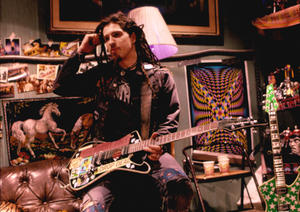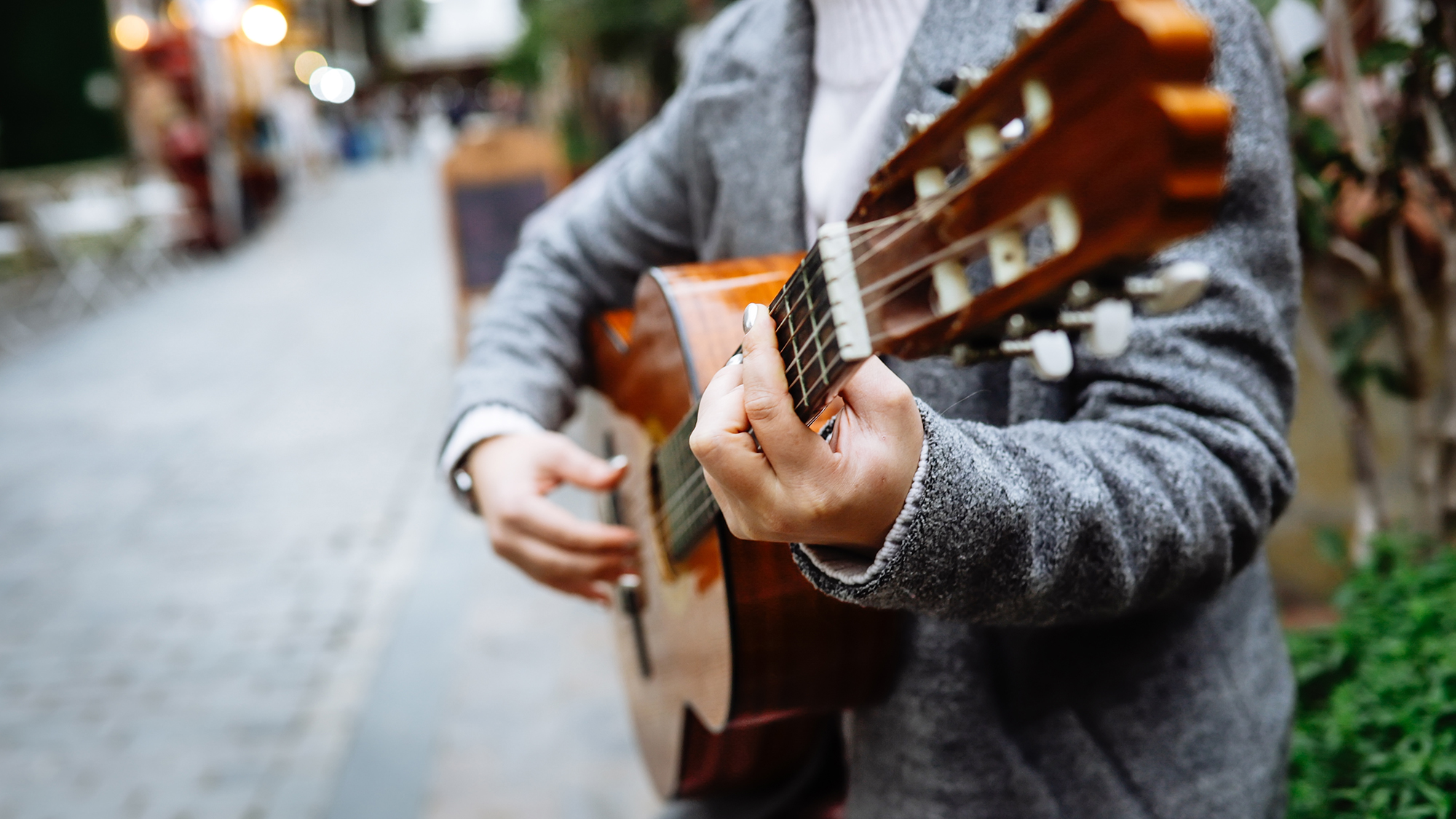
We revisit White Zombie guitarist J. Yuenger's classic Guitar World column, "Astro Ink."
In case you missed Part 1, click here
So you've learned how to play some stuff and you've even written a few riffs. Now what? How do you play with another guitarist or bassist? (You probably won't find a drummer for a long time-they're hard to come by.) How do you even find someone to play with in the first place? As promised at the end of last month's column, this is gonna be our subject this time out. I realize that some of what I'm about to tell you will probably seem painfully obvious but it's stuff that took me a lot of trial and error and wasted energy to figure out on my own. There are the a few fairly sure-fire ways for you to find people to play with:
Put up ads in a local "mom & pop" record store where they sell cool stuff. (Note: it goes without saying that your ad should list what bands you're into and also state what you're looking for.)
Try to meet people who are into the same general scene at local gigs and clubs.
Put an ad on your local guitar store's bulletin board (Note: this is a place where you should be hanging out all the time and bugging the owners, anyway).
Place an ad in a local alternative paper.
Get The Pick Newsletter
All the latest guitar news, interviews, lessons, reviews, deals and more, direct to your inbox!
Put up ads at your school-although, unless you've just moved to a new neighborhood, the chances are you know all the cool rock kids there already.
Getting In Gear
Once you've found another player or two, you won't need a wall of 100-watt Marshall stacks to practice together in somebody's bedroom. All you need is a small amp (like a Pignose or a mini-Marshall) and maybe a stomp box or two to customize your sound-BOSS or DOD both make pedals that are durable, good- sounding and inexpensive. My first setup was a 10-watt Peavey Decade and a Pro-Co Rat distortion box and that worked out just fine until I was in an actual band.
Timing Talk
A crucial skill to learn early on is keeping time, so one of the first things I recommend you do is play along with records to get used to the feeling of playing with a drummer. Also, nowadays you can buy an electronic metronome for about 30 bucks and that's all you need to help you keep your jams solid-you don't need a fancy, state-of-the-art drum machine.
Being In Tune Is Good
Playing in tune together is also important. Bottom-of-the-line tuners by KORG or BOSS will work just fine. Actually, it's kinda funny me saying this because I wasn't able to afford a tuner until I'd been in White Zombie for a while. I used to just find "E" on records and then go from there. But nowadays, bands are using so many different tunings you can't really do that! It's obviously not that important to have a tuner when you're playing by yourself, but as soon as you start playing with someone else you definitely have to have one.
Be Prepared
Aside from a little amp, a tuner, a metronome (maybe) and your guitar-the initial stuff you're gonna want to have in your gig bag when you play with someone else is a cable, an extra pack of strings (you're definitely going to be breaking them) and a couple of extra picks because you'll always lose them. And, if making noise is a problem in your house, it's not hard to figure out a way to jam using headphones. Try plugging into your stereo.
Talking of making noise: there's a good chance that your school will let you and your friends jam together in the music-room after class. I used to do that all the time, because it was the only place I got to turn up loud when I first started out and hadn't gotten a band together or found a place to practice.
Tape Trading
One other thing: if you find someone to play with and you live far away from each other or you don't have much time to actually practice together, you can always trade tapes of ideas and work together that way. When I was in Japan I saw something that really tripped me out: in Tokyo they have this park where all the rock kids go every Sunday. Because they all spend so much time in school, Sunday is the only chance they get to talk to each other. Once a week, all these kids from opposite ends of the city turn up at the park with their gig bags, a battery pack and a four-track. Then, they record guitar parts on each other's tapes so they can take it home for the week, study it and write songs "together." It's a really bizarre sight to behold, but totally cool at the same time.
And now for this month's playing tip.....
Faking Tremolo
One very cool thing to do to spice up your rhythm playing that a lot of people don' t think of is to apply vibrato or all-out bend to chords. It makes your rhythm parts sound much more psychotic. You can hear me doing this in "Spiderbaby (Yeah-Yeah-Yeah)" [La Sexorcisto: Devil Music Volume 1] as shown in Figure 1.

It almost sounds like some twisted old blues riff-and it's one of my favorite moments on that album. It's a very simple thing to do, basically I'm just shaking the shit out of the strings the whole time.
Josh Hart is a former web producer and staff writer for Guitar World and Guitar Aficionado magazines (2010–2012). He has since pursued writing fiction under various pseudonyms while exploring the technical underpinnings of journalism, now serving as a senior software engineer for The Seattle Times.
“The main acoustic is a $100 Fender – the strings were super-old and dusty. We hate new strings!” Meet Great Grandpa, the unpredictable indie rockers making epic anthems with cheap acoustics – and recording guitars like a Queens of the Stone Age drummer
“You can almost hear the music in your head when looking at these photos”: How legendary photographer Jim Marshall captured the essence of the Grateful Dead and documented the rise of the ultimate jam band










